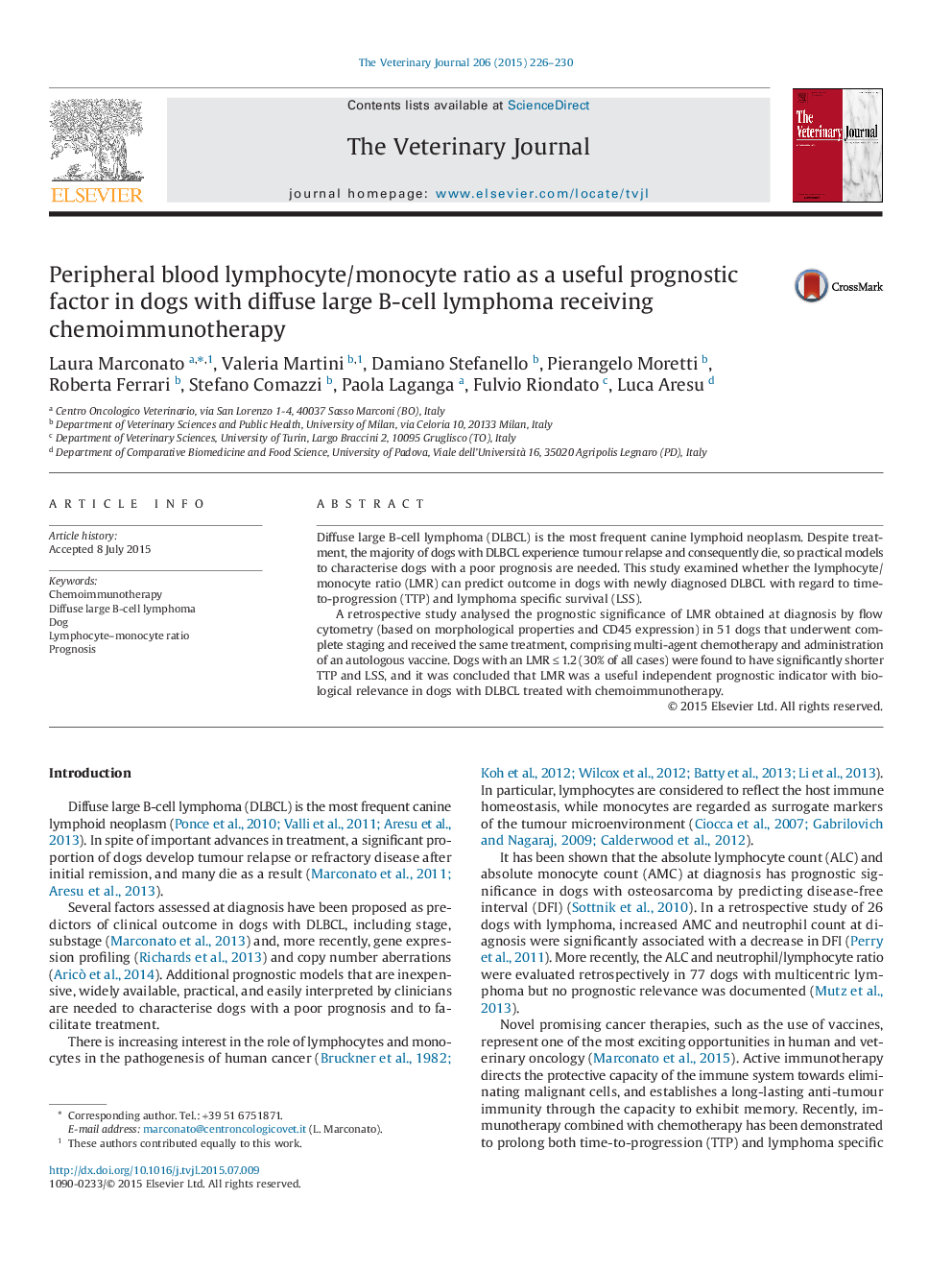| Article ID | Journal | Published Year | Pages | File Type |
|---|---|---|---|---|
| 5797741 | The Veterinary Journal | 2015 | 5 Pages |
â¢The majority of dogs with diffuse large B-cell lymphoma (DLBCL) relapse and die as a consequence of the disease.â¢New prognostic models are needed to characterise dogs with a poor prognosis.â¢A lymphocyte/monocyte ratio (LMR)ââ¤â1.2 was associated with inferior time-to-progression and lymphoma specific survival.â¢LMR at diagnosis is a prognostic indicator for dogs with DLBCL receiving chemoimmunotherapy.
Diffuse large B-cell lymphoma (DLBCL) is the most frequent canine lymphoid neoplasm. Despite treatment, the majority of dogs with DLBCL experience tumour relapse and consequently die, so practical models to characterise dogs with a poor prognosis are needed. This study examined whether the lymphocyte/monocyte ratio (LMR) can predict outcome in dogs with newly diagnosed DLBCL with regard to time-to-progression (TTP) and lymphoma specific survival (LSS).A retrospective study analysed the prognostic significance of LMR obtained at diagnosis by flow cytometry (based on morphological properties and CD45 expression) in 51 dogs that underwent complete staging and received the same treatment, comprising multi-agent chemotherapy and administration of an autologous vaccine. Dogs with an LMRââ¤â1.2 (30% of all cases) were found to have significantly shorter TTP and LSS, and it was concluded that LMR was a useful independent prognostic indicator with biological relevance in dogs with DLBCL treated with chemoimmunotherapy.
